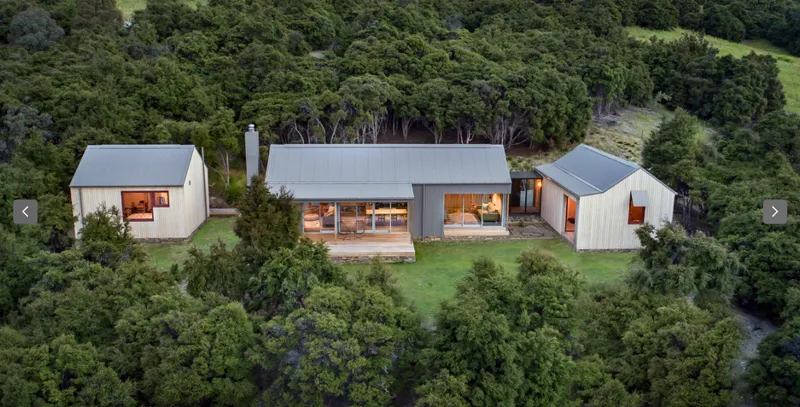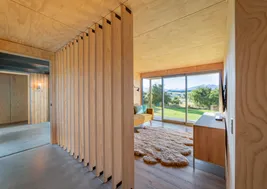The trampers hut has been reinterpreted for modern living
Hidden Hills House


Seclusion and surprise
Obliquely positioned, the entrance sequence is one of seclusion and surprise. The design consists of articulated separate forms (huts), minimising the effect of building programme and volume within the landscape, while creating differing experiences – reminiscent of journeying from hut to hut.
The bedroom 'hut' is clad entirely in Douglas fir weather boards with natural stain finish, and floats apart from the main living 'hut' with a quazi-open entrance link, giving the feeling of walking outside. This experience is heightened when commuting to the guest ‘hut’, with a completely open transition.




Raw yet refined
The unfinished plywood interior walls and natural steel surfaces encourage an imperfect and patinaed appearance. Contrasting this muted palate is injections of coloured surfaces; playful and individual notes to each hut. Deviating from Central Otago’s love affair with Canadian cedar, the house is clad in New Zealand-grown Heart Douglas fir, minimising its carbon footprint while supporting sustainable growth forests.
Caring for nature
The project carefully positions itself within the landscape to retain the existing Kanuka vegetation, ensuring impact to the immediate environment was minimal.
To mitigate the potential for overheating, a large veranda provides shelter to the living hut, with bedroom huts positioned perpendicular. Windows are thermally broken with Low E glazing, to minimise the Wanaka summer heat and maximise the heat retention during the winter months.
Honest materials and forms have been composed into a warm, compact and inviting holiday retreat. The central linking spine creates a delightful variety of circulation experiences, including spaces that offer solitude, companionship, reflection and rest.

Collective Effort
Collective Effort

